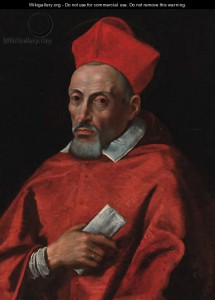 Today I greet readers and friends who are blessed with the name “Robert”. Happy Novus Ordo Name Day.
Today I greet readers and friends who are blessed with the name “Robert”. Happy Novus Ordo Name Day.
You get two Name Days, since the traditional day is 13 May.
In particular I remember in prayer His Excellency Most Reverend Robert C. Morlino, the Extraordinary Ordinary, Bishop of Madison. I am, sincerely, not worried about the state of his soul, but God knows what to do with prayers, which are never in vain.
I have a couple other Roberts to pray for and to congratulate.
Let’s have a look at St. Robert’s entry in the post-Conciliar Martyrologium Romanum of 2005.
Sancti Roberti Bellarmino, episcopi et Ecclesiae doctoris, e Societate Iesu, qui praeclare de theologicis temporis sui controversiis peculiari ac subtili habitu disputavit; cardinalis renuntiatus, ad ministerium pastorale in Ecclesiae Capuana magnopere sese impendit et tandem Romae ad Apostolicae Sedis et fidei doctrinae defensionem plurimos suscepit labores.
Would you all like to stretch your Latin muscles? I’ll turn on the moderation queue so that you can’t copy from each other’s papers. Other comments (without translations) about St. Robert I’ll let through as I find them.
St. Robert’s body may be venerated in Rome at the Church of St. Ignatius, Sant’Ignazio, which is a must visit for many reasons.
St. Robert was a Jesuit (a good one), a Cardinal, theology and profession and rector at the Roman College, archbishop of Capua, He was a major figure in the implementation of the Council of Trent and in the Counter-Reformation. He also took a major role in the matters of Giordano Bruno and Galileo Galilei. He was a splendid teacher in difficult times who refuted errors much like those we see cropping up in the Church today. Stories of his great humility can be multiplied.
Not long ago, I was privileged to see a letter with a signature of St. Robert Bellarmine. HERE
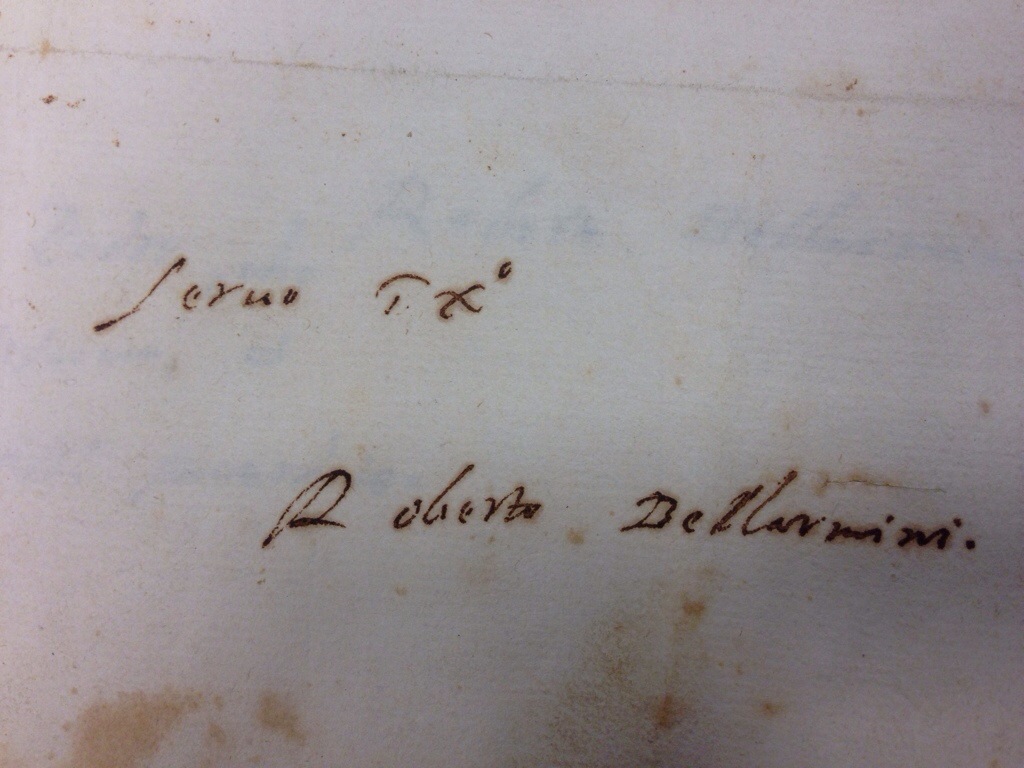
St. Robert Bellarmine was a prolific writer, but a great deal of his work has not yet been translated into English. In recent years there have been good efforts to do just that. One of those efforts has left me a bit in awe.
Behold Controversies of the Christian Faith translated by the erst-while of Homiletic and Pastoral Review Fr. Kenneth Baker, SJ. US HERE probably unavailable– UK [nope]
It’s hardcover only, I believe. But… look at the size of this thing!
The pages, from fairly subtle paper, are jammed with text.
“But Father! But Father!”, you terrified liberals are quaking, “Ho… ho… how long is this book?!? How many pages of so-called ‘sound teaching’ are there? If you are happy about this book, it must be rigid and ossified and … and… AGAINST VATICAN II! JUST LIKE YOU!”
To which I respond: Tremble, heretics, women’s ordination fans, and Fishwrap schismatics.
Seriously, I am in awe of the discipline it took to translate this opus magnum.
It begins with a Forward and a brief life of the saint. Fr. Baker says that he did it in a year. Holy cow.
 Next, available also on Kindle (don’t have a Kindle yet? US HERE – UK HERE), Doctrina Christiana: The Timeless Catechism of St. Robert Bellarmine translated by Ryan Grant with an introduction by the great Bp. Athanasius Schneider. US HERE – UK HERE
Next, available also on Kindle (don’t have a Kindle yet? US HERE – UK HERE), Doctrina Christiana: The Timeless Catechism of St. Robert Bellarmine translated by Ryan Grant with an introduction by the great Bp. Athanasius Schneider. US HERE – UK HERE
A while back I posted an entry with suggestions for different catechisms. I think this should be on the list. This takes the form of a dialogue, rather than simply prose explications of bullet points.
In the forward we read:
In our time of an enormous and general confusion in matters of Catholic faith we do need urgently a crystal-clear, absolute reliable and at the same time simple catechetical text. Such a text represents the famous catechism of St. Robert Bellarmine, which notwithstanding being written 400 years ago, remains nevertheless up to date. This catechism had until the 20th century about 400 editions and has been translated into 60 languages. It was a favorite catechetical tool for the missionaries in the past centuries.
The countries of the so-called Western civilization became today almost neopagan societies and there are even people who named themselves Catholics but are living like pagans. It is therefore obvious that we are living in a missionary. Both inside and outside the church.
The translator adds these interesting notes, which make reference to the first work by Bellarmine with which I started this entry, above:
St. Robert Bellarmine composed two catechisms under the title of Doctrina Christiana(Christian Doctrine), one called his “Small Catechism” which he had written for children and simple souls. This second one, written as a dialogue, called his “Long Catechism,” was intended for teachers and for the well instructed to deepen their understanding of the truths of the faith. The Shorter Catechism was translated in 1614, but the Long, at least to our knowledge, had never been rendered into English until now.
The translation was made from the Latin edition published in Prague in 1732. It seemed to be the most accurate, and it was compiled and edited into a text version book by Anton Repko, whom I especially thank as many of the copies available in electronic form have defects, missing pages etc. Still, as sometimes the Latin edition used complicated phrases from 16th century vernacular Latin that simply would not render into English well, it was necessary to consult Bellarmine’s original Italian to simplify.
This Catechism was written at the express command of Pope Clement VIII, and approved by him in 1598. It quickly became more popular than the Saint’s Controversies, which he is principally known for today. It was also specifically approved by Pope Benedict XIV, and its importance was so great that Pius XI, in his bull of canonization for the Saint, declared of this Catechism:
“Nor may we pass over in silence his sacred sermons and also his catechetical works, especially that catechism, which the use of the ages as well as the judgment of a great many bishops and doctors of the church has approved. Indeed, in that same catechism, composed at the command of Clement eight, the illustrious holy theologian expounded for the use of the Christian people and especially of children, the Catholic truth in a plain style, so brilliantly, exactly and orderly that for nearly three centuries in many regions of Europe and the world, it most fruitfully provided the fodder of Christian doctrine to the faithful.”
In his introduction, the great Bp. Schneider penned, and we cannot but agree:
The corruption of morals and depravity of life is already so great, and ever increasingly greater, not only among uncivilized peoples but even in those very nations that are called Christian. The Apostle Paul, writing to the Ephesians, repeatedly admonished them in these words: “But immorality and every uncleanness or covetousness, let it not even be named among you, as become saints; or obscenity or foolish talk” (Eph. 5:34). He also places the foundation of holiness and sound morals upon a knowledge of divine things—which holds in check evil desires: “See to it therefore, brethren, that you walk with care: not as unwise but as wise. . . Therefore, do not become foolish, but understand what the will of the Lord is” (Eph. 5:15-16).” (Encyclical Acerbo nimis from April 15, 1905).
A good and solid knowledge of the Catholic faith has as its aim a virtuous life through which alone with the help of God’s grace one can achieve eternal salvation. Saint Pius X teaches therefore: “Christian teaching not only bestows on the intellect the light by which attains truth, but from it our will draws that ardor by which we are raised up to God and joined with Him in the practice of virtue” (Encyclical Acerbo nimis from April 15, 1905).
The true knowledge of the Catholic faith fills the human mind with a light and this light, in spite of being sometimes obfuscated by a bad will, is usually the effective means of salvation.
The content of our Catholic Faith is not just words and formulae to be memorized. The true, interior content of the Faith is a Person, the divine Person of the Eternal Word made Flesh, Christ Jesus. We can have a relationship with a Person. Coming to know the Faith leads to knowledge of Christ and, in turn, hope and love. Furthermore, as the bishop pointed out, even if one loses love, that is charity, and loses hope, faith remains long after. That faith can help to bring you back to hope and to charity.
Speaking of Bp. Schneider, he, with Card. Burke, are calling for Catholics to pray a decade of the Rosary and to fast at least one day a week from NOW, the Feast of St. Robert Bellarmine, through October (to cover the time of the Synod on the Amazon).

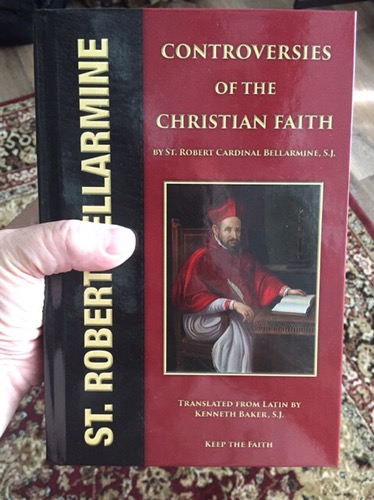


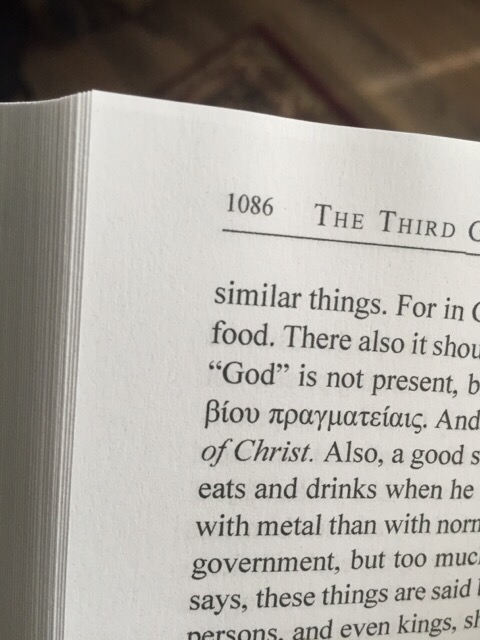
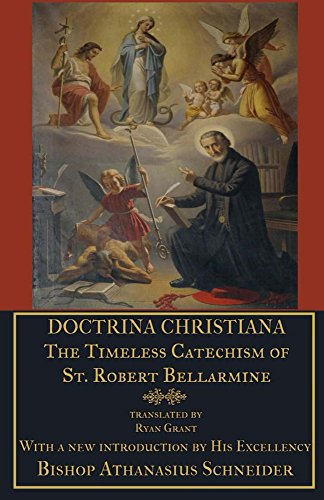

































Saint Robert Bellarmine, bishop and doctor of the Church, from the Society of Jesus, who assesed the theological controversies of his time in a peculiar and subtle fashion. After he became a cardinal, he devoted himself strenuously to the Church’s pastoral ministry in Capua, and finally in Rome where he took up many tasks at the Apostolic See for the defense of the doctrine of the faith.
I was greatly impressed by this article and others on the same subject:
“Thomas Jefferson is honored rightly as one of the greatest minds in American history, who bequeathed to his country a statement of principles that began the extraordinary experiment of the American republic. It is surprising to learn, then, that a careful study of the Declaration reveals striking parallels between Jefferson’s eloquent appeal to the unalienable rights of men and self-determination and the Church’s teachings on the human person and a properly ordered society. In fact, nearly two centuries before Jefferson, his very same ideas were written by a Counter-Reformation Catholic of equal genius: the Jesuit theologian, saint, cardinal and doctor of the Church Robert Bellarmine (1542-1621). …If, then, Jefferson was influenced by Bellarmine, the author of the Declaration was also shaped by Aquinas and the whole of the Catholic intellectual tradition. And so, too, was America’s chosen form of government.”
http://www.ncregister.com/daily-news/bellarmine-jefferson-and-the-declaration-of-independence
It’s a heretics plot: Amazon days they have no idea when book will be in stock. And AbeBooks also has only one seller who is out of stock (listing price as $300+) and doesn’t know anything. In this day of instant, on-demand publishing, this is conspiracy material…
On the plus side, Church of Saint Ignatius in Rome is also good for its statue of Saint Ignatius who is crushing the head of heretic Luther. At least Steve Ray thinks it is Luther…
I was just watching an episode of Time Team (one of the two in Nevis in the Caribbean) where they found one of those face jugs from the 16-1700’s. They called it a Bellarmine jug. The presenter asked who Bellarmine was, and one of the experts started to answer. Then Phil (the hat guy) defined him as “a hell-raising cardinal.” (He was obviously joking, but I performed the usual sigh and double sinal salute….)
There’s also a river archeology show called Mud Men that has a whole episode focusing on Bellarmine jugs. They visit a museum with shelf upon shelf of jugs!
In particular I remember in prayer His Excellency Most Reverend Robert C. Morlino, the Extraordinary Ordinary, Bishop of Madison. I am, sincerely, not worried about the state of his soul, but God knows what to do with prayers, which are never in vain.
Quite a while back I read one of St. Alphonsus Liguouri’s books, I think it was “The Glories of Mary” (but not sure). At the beginning, either the prologue or the preface or dedication, the author asked the reader to pray for him – and 250 years later the printer included this in the published version even though the author has long since been sainted. At first I was about to pass over it thinking “well, if there is someone who doesn’t need my prayers, it is SAINT Alphonsus.” Then I recalled something: God is not in time. He might well grant to Alphonsus, during his life, graces on account of prayers said on his behalf by those who come later. Thus my prayers, however humble and poorly-fitted they are, might have some miniscule participatory part in his great sainthood. So I said: “who am I to ignore a direct plea from a saint to pray for him? Not me!”
I also decided that when I publish a book, I too am going to ask for prayers. If it’s a good book, I might be getting prayers decades after I die – what a great thing!
Thank you Fr. Z and also to L for the link to a classic Bellarmine article at the Register.
“At a time when many Americans have lost touch with both the historical and philosophical foundations of the United States…any discussion of genius and influence must include two names, one the author of the Declaration of Independence and the other a doctor of the Church.
…
When we read the writings of Robert Bellarmine, such as De Laicis, his treatise on civil government, what do we find? “All men,” Bellarmine wrote, “are equal, not in wisdom or grace, but in the essence and nature of mankind” (Chapter Seven). Considering the origins of political power, Bellarmine taught, “Political power emanates from God. Government was introduced by divine law, but the divine law has given this power to no particular man. … Men must be governed by someone, lest they be willing to perish. It is impossible for men to live together without someone to care for the common good. Society must have power to protect and preserve itself.”